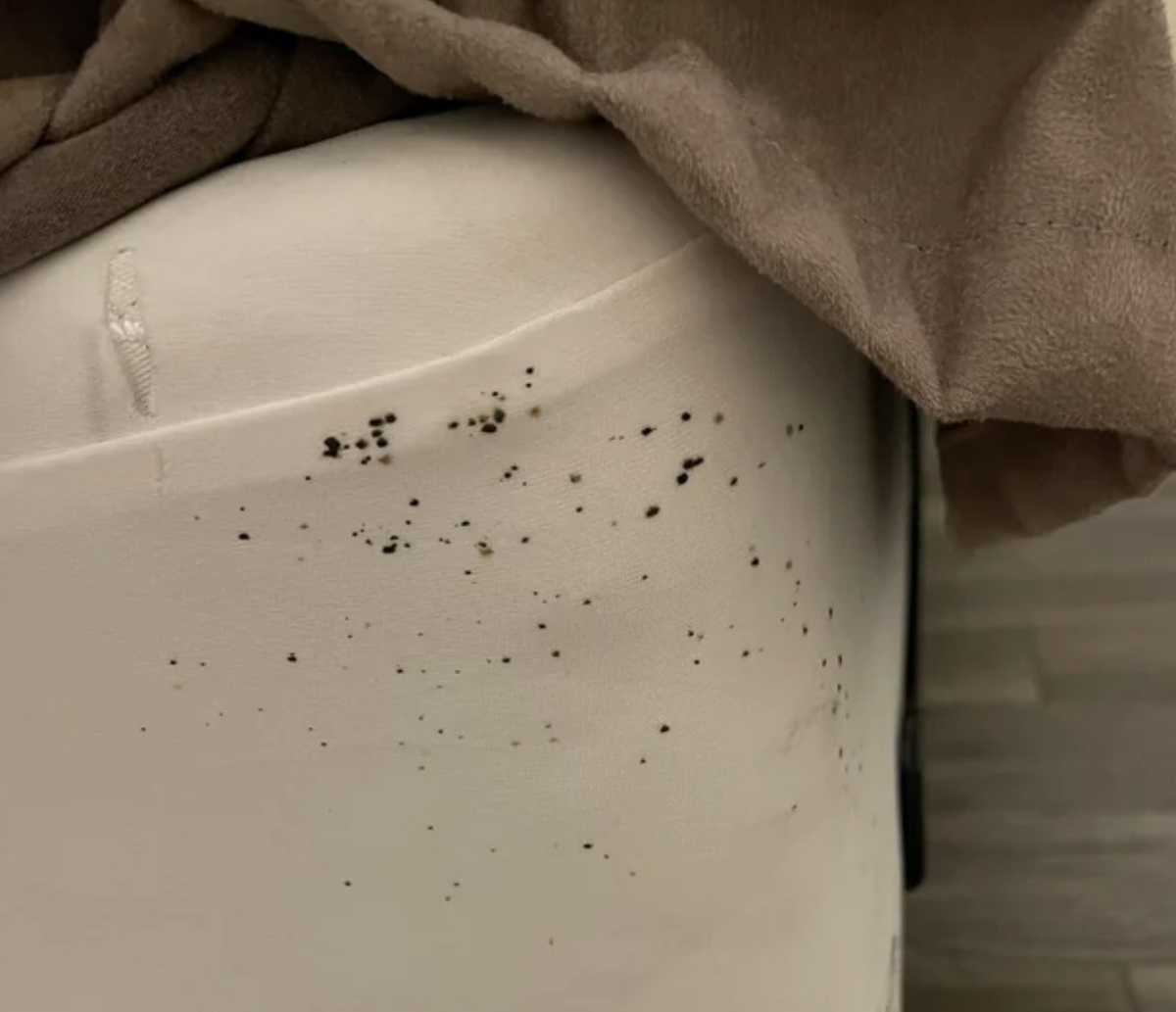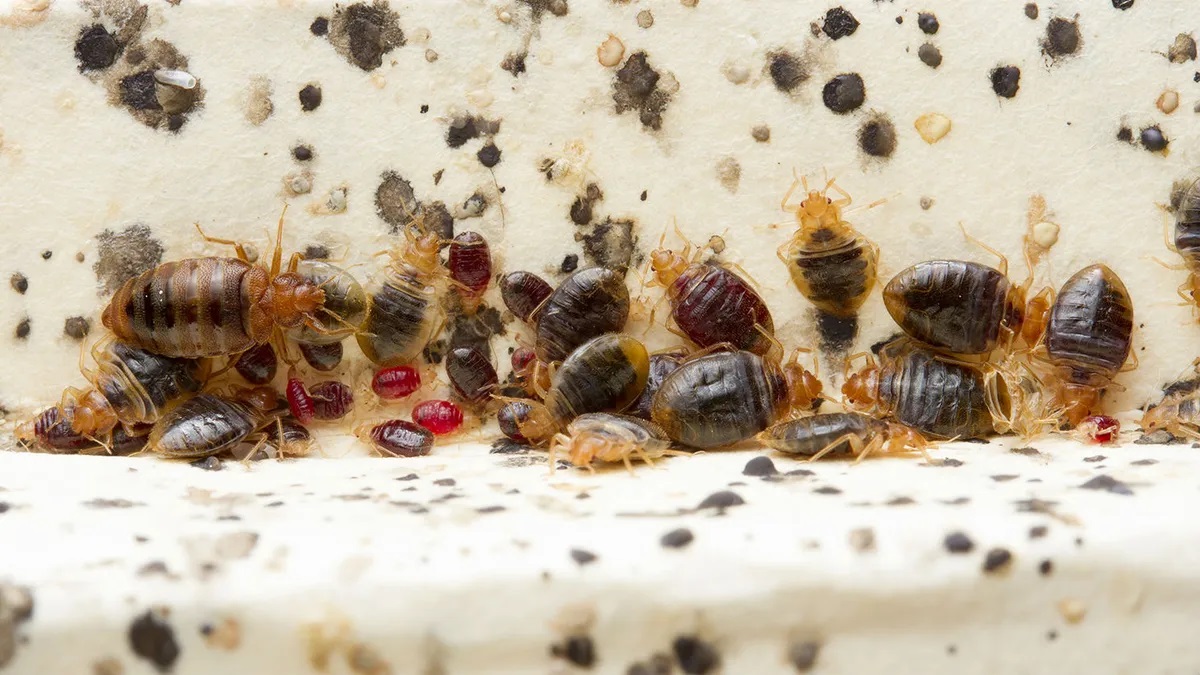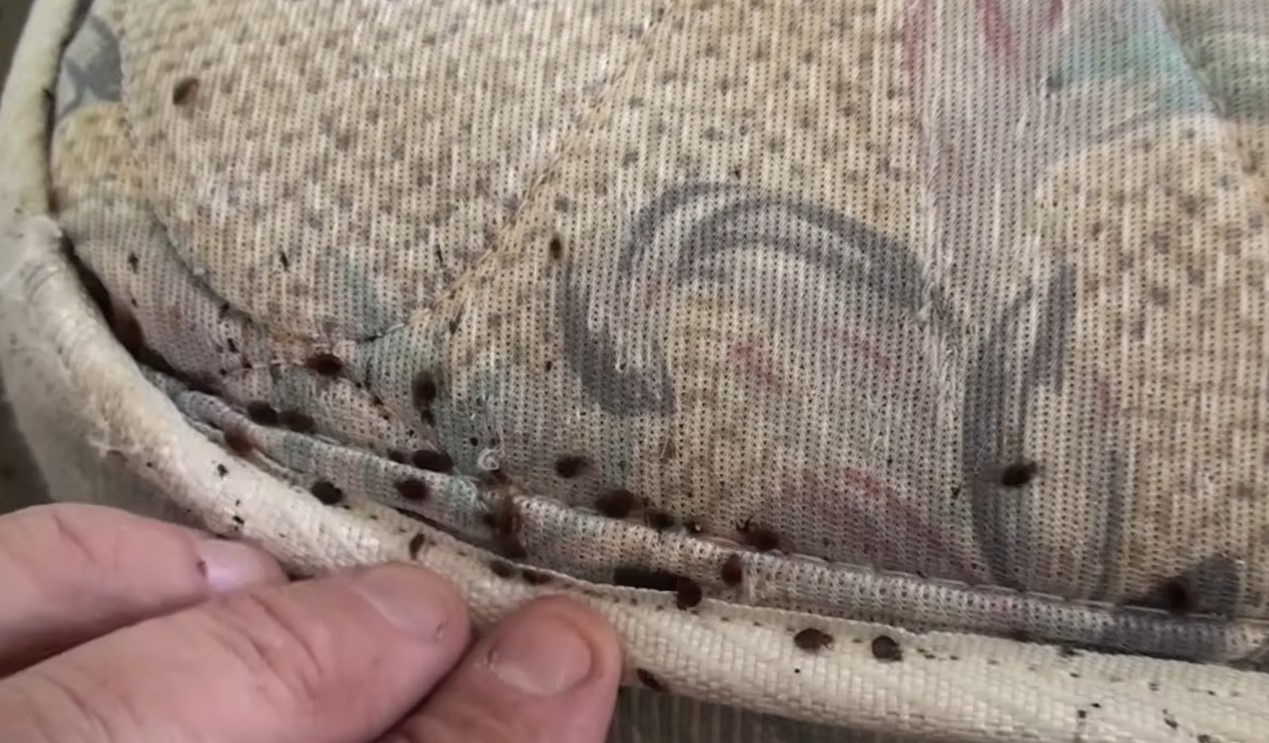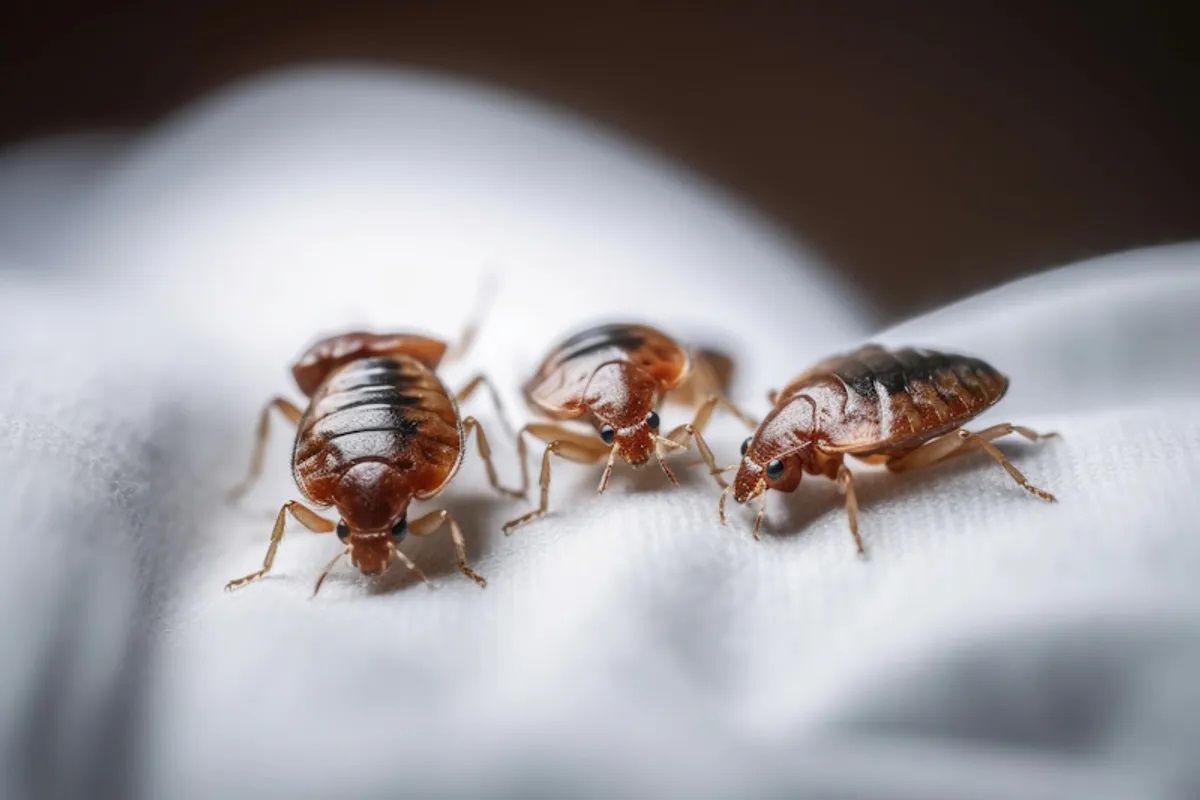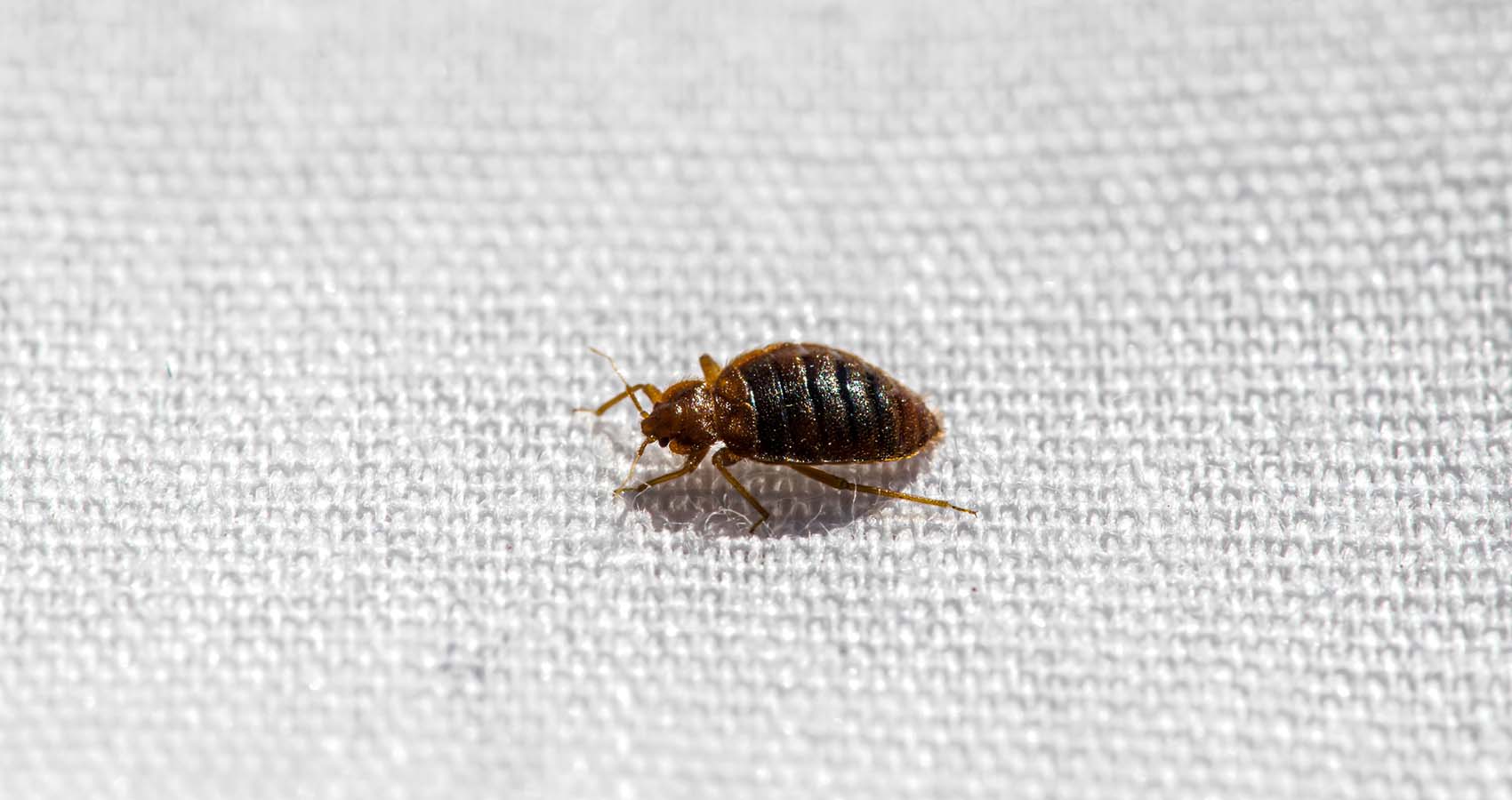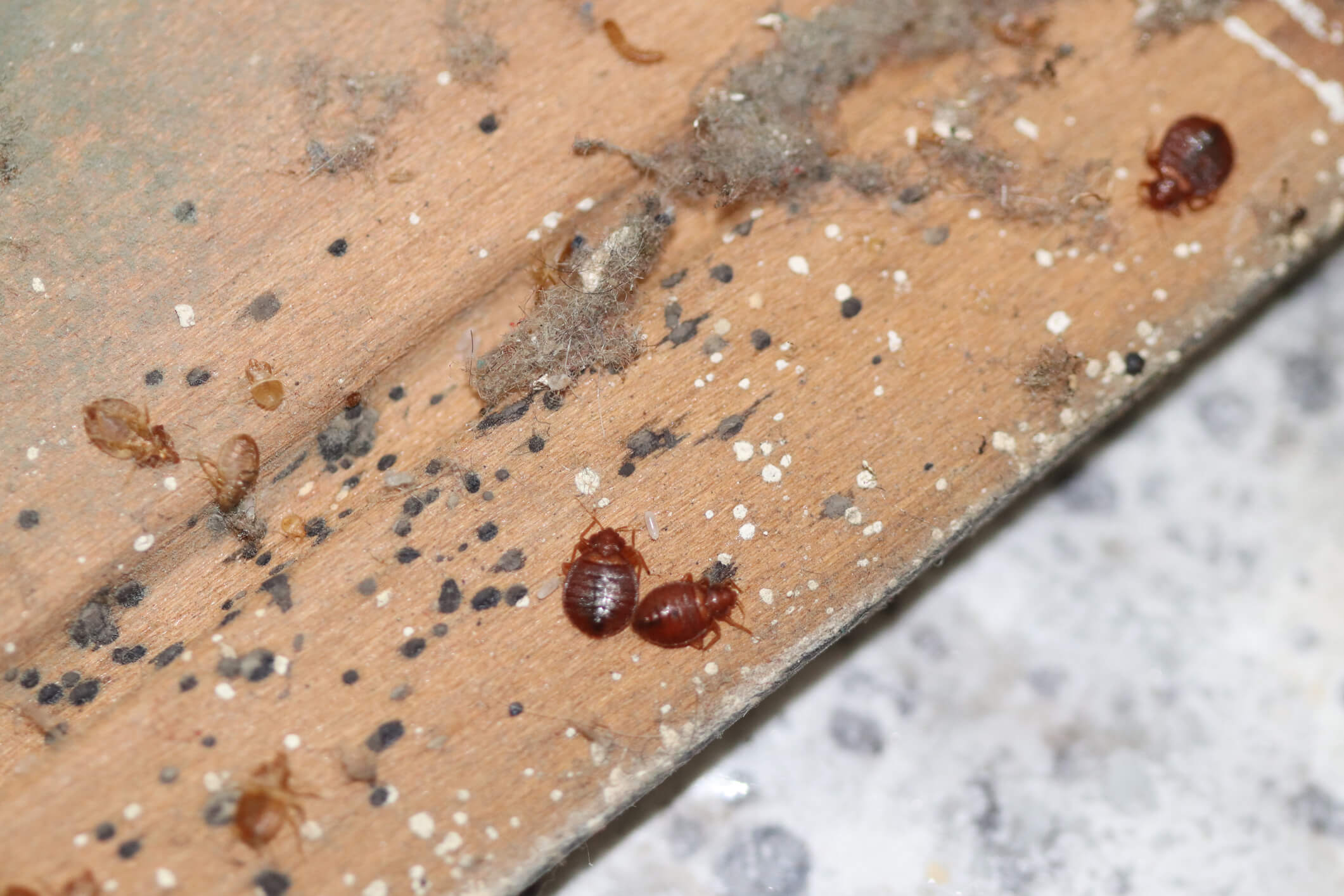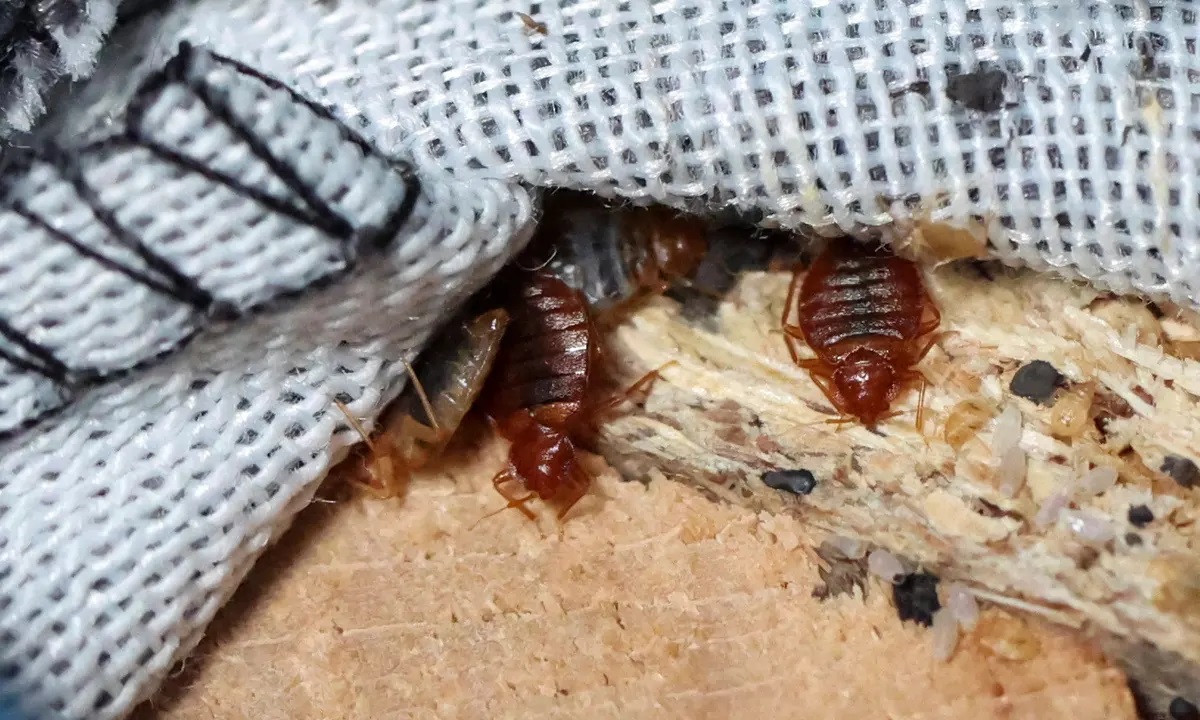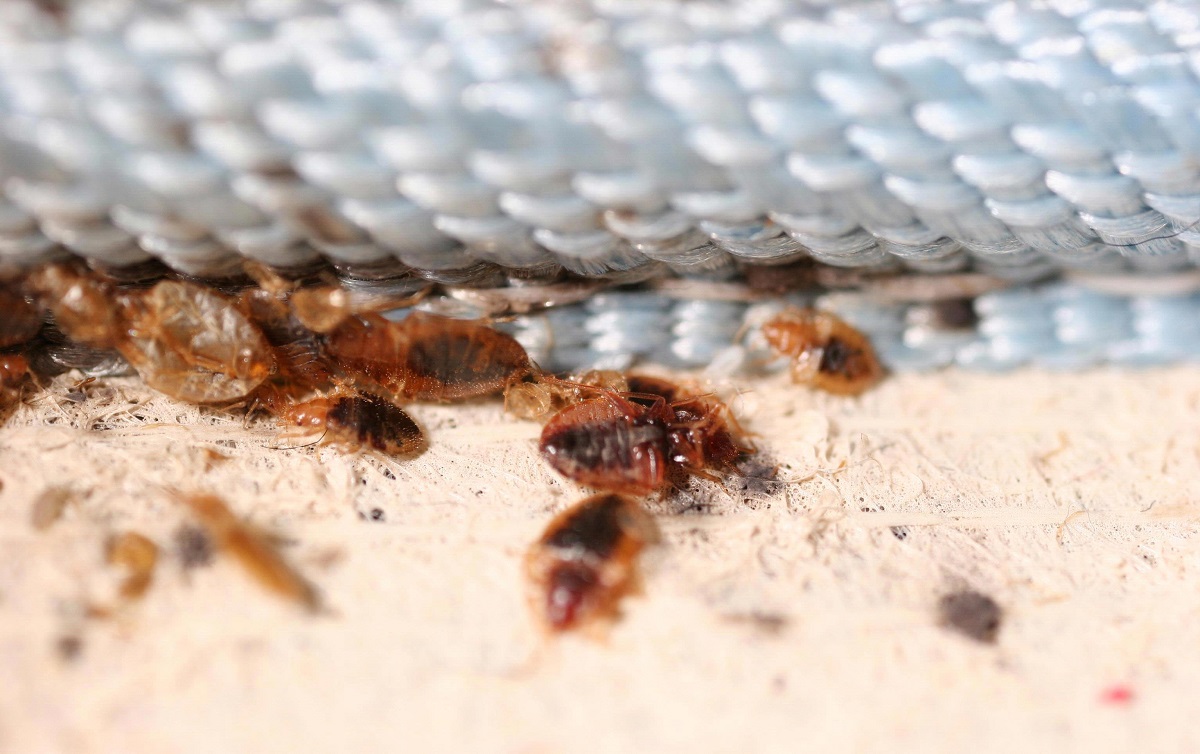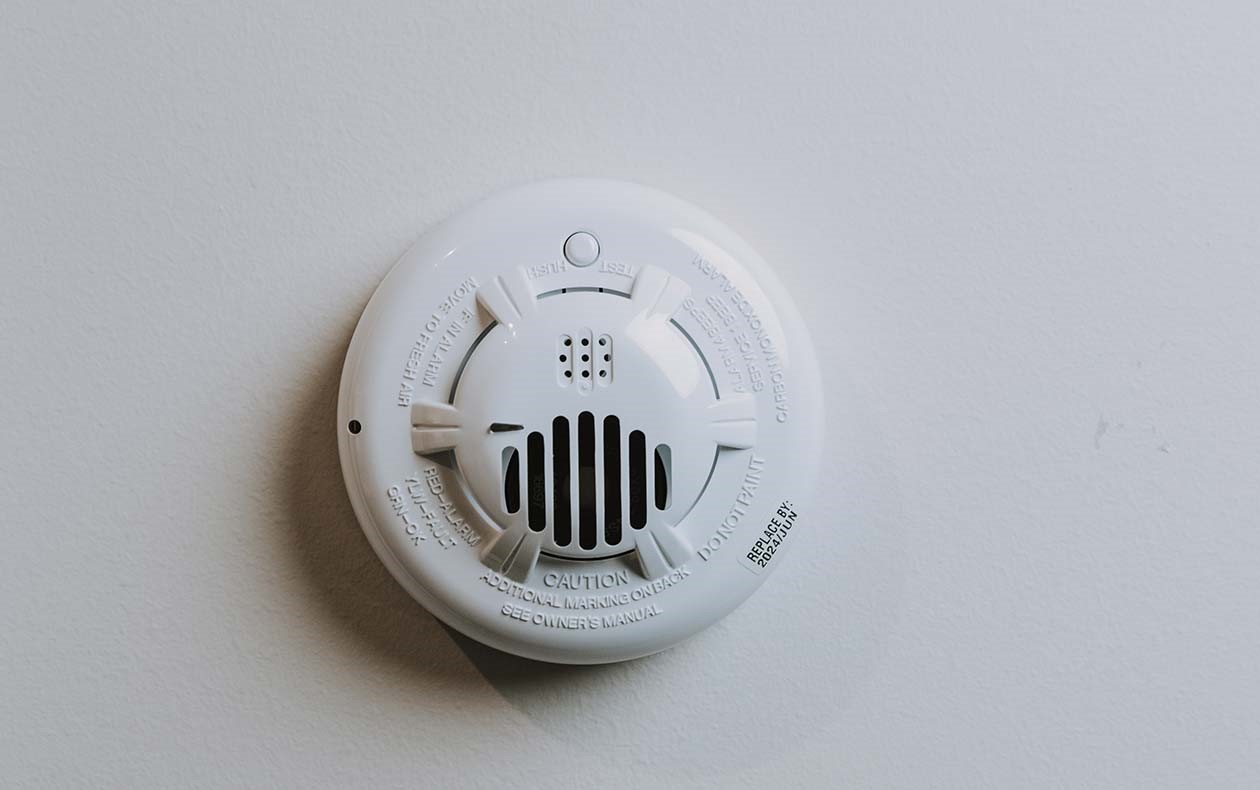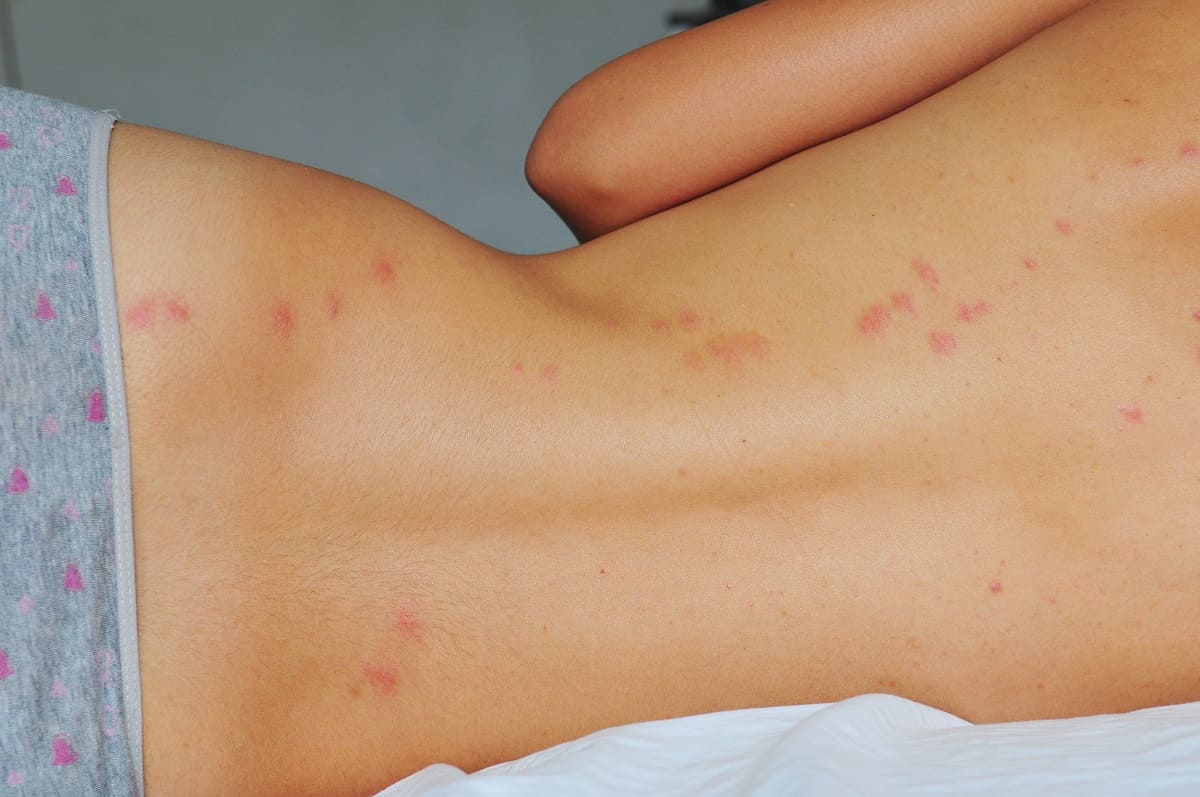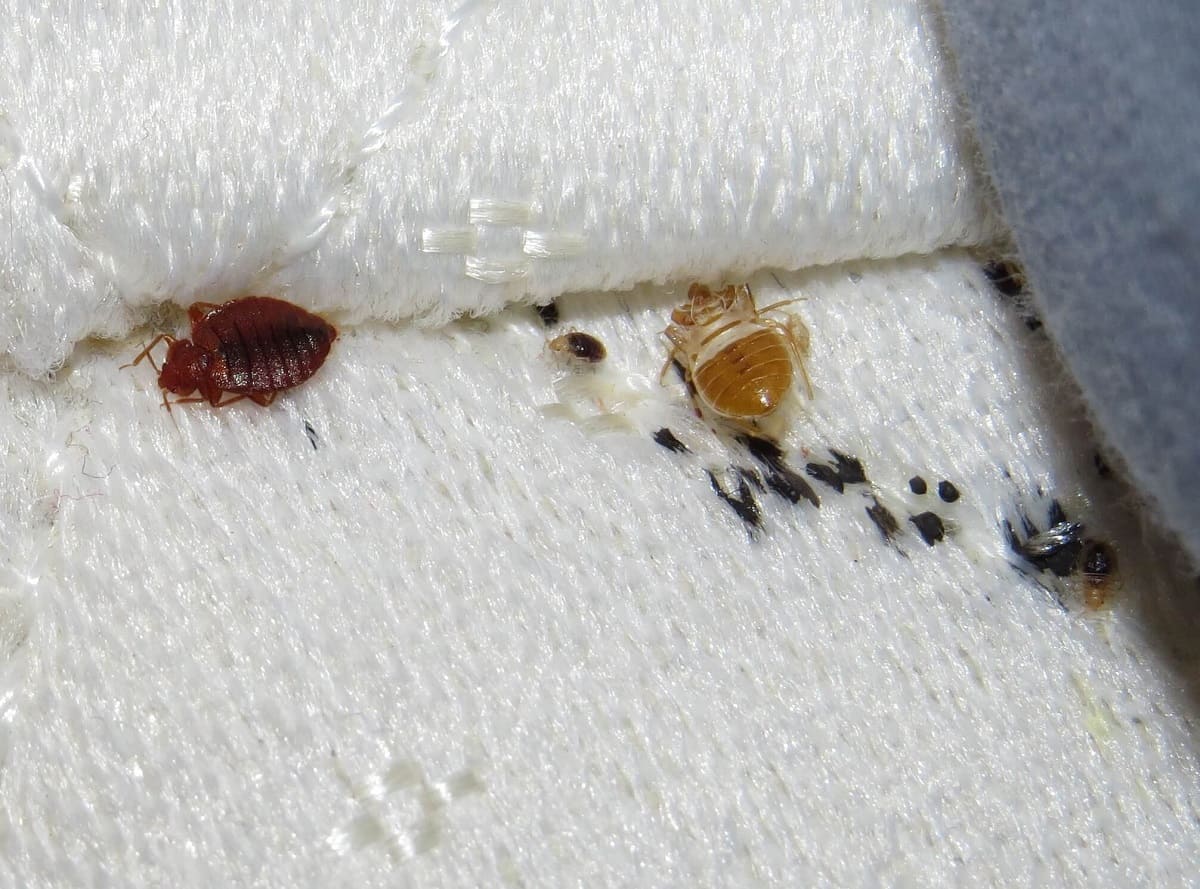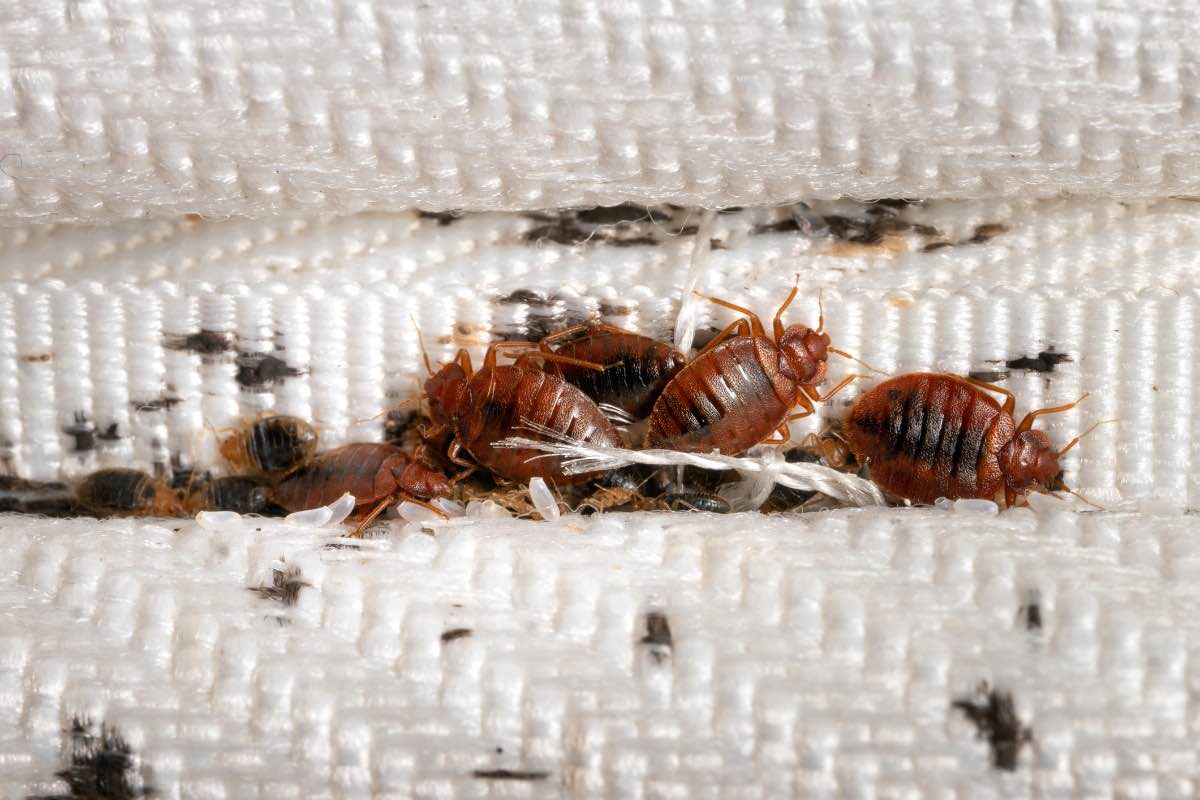Home>Furniture>Bedroom Furniture>How Do You Know If You Have Bed Bugs
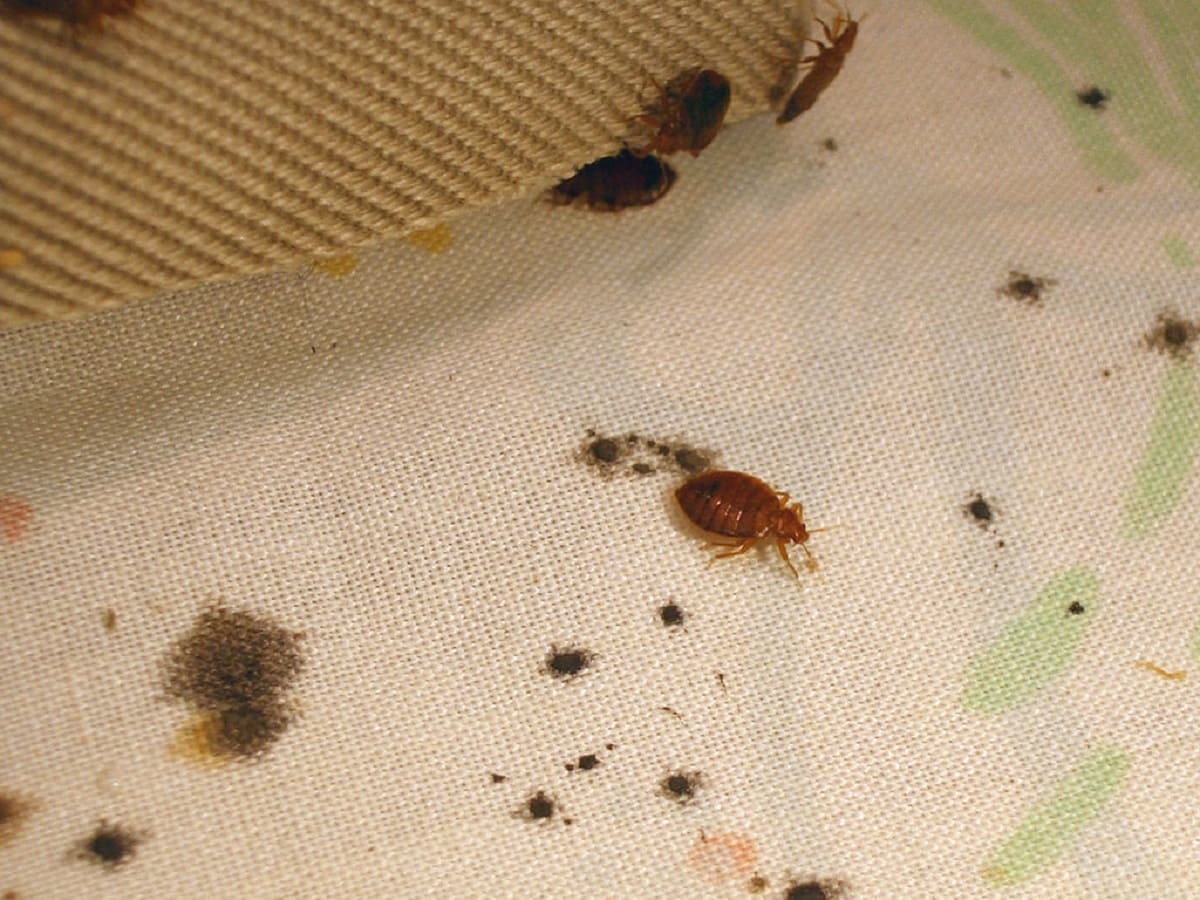

Bedroom Furniture
How Do You Know If You Have Bed Bugs
Modified: September 1, 2024
Discover if you have bed bugs with our expert tips. Learn common signs, prevention methods, and effective solutions for your bedroom furniture.
(Many of the links in this article redirect to a specific reviewed product. Your purchase of these products through affiliate links helps to generate commission for Storables.com, at no extra cost. Learn more)
Introduction
Welcome to the world of bedroom furniture! Your bedroom is a personal sanctuary, a place where you can unwind, relax, and get a good night’s sleep. But what if there’s an unwanted guest lurking in the corners of your cozy space? Yes, we’re talking about bed bugs – those tiny, elusive creatures that can turn your peaceful retreat into a nightmare.
Bed bugs are small, reddish-brown insects that feed on the blood of humans and animals. Although they are not known to transmit diseases, they can cause intense itching, discomfort, and sleep disturbances. Dealing with a bed bug infestation can be a harrowing experience, but with the right knowledge and actions, you can regain control of your bedroom and restore peace to your home.
In this comprehensive guide, we will explore the signs of a bed bug infestation, the physical symptoms they leave behind, and the steps you can take to prevent and treat these unwelcome visitors. So, let’s dive in and learn how to detect and combat bed bugs effectively.
Key Takeaways:
- Detecting bed bugs early through regular inspections and understanding their hiding spots is crucial for effective treatment and prevention of infestations.
- Professional extermination, along with proactive prevention strategies, offers the best chance of eradicating bed bugs and maintaining a pest-free home environment.
Read more: What To Do If You Have Bed Bugs
Understanding Bed Bugs
Before we delve into the signs and symptoms of a bed bug infestation, it’s important to have a basic understanding of these tiny pests. Bed bugs are flat, oval-shaped insects that are about the size of an apple seed. They are most active at night and are attracted to warm bodies for their blood meals. Although they are commonly found in beds, they can also infest other furniture, such as couches and chairs.
One of the reasons bed bugs are so difficult to detect is their ability to hide in tiny cracks and crevices. They can squeeze into spaces as thin as a credit card, making it challenging to spot them with the naked eye. Bed bugs are excellent hitchhikers and can easily travel from one place to another, attaching themselves to clothing, luggage, or other personal belongings.
Contrary to popular belief, bed bugs are not a sign of poor hygiene or a dirty home. They can infest even the cleanest and most well-maintained environments. The presence of bed bugs is often a result of travel, visiting infested places, or bringing in second-hand furniture that is already infested.
It’s essential to understand that bed bug infestations can happen to anyone, regardless of socioeconomic status. These pests are equal opportunity invaders, and it’s crucial to take immediate action at the first sign of an infestation.
Now that we have a better understanding of bed bugs and how they operate, let’s move on to the signs and symptoms that indicate their presence. Being able to identify these indicators is crucial for early detection and effective treatment of a bed bug infestation.
Signs of Bed Bugs
Identifying the signs of a bed bug infestation is the first step in tackling the problem head-on. While bed bugs are excellent at hiding, they do leave behind several noticeable indicators of their presence. By being vigilant and observant, you can catch an infestation early and prevent it from spreading further.
Physical Symptoms: One of the most common signs of a bed bug infestation is the physical symptoms experienced by the occupants of the affected room. Bed bug bites can appear as small, red, itchy welts on your skin. These bites are typically arranged in a line or cluster and are commonly found on exposed areas, such as the arms, legs, neck, or face. Not everyone reacts to bed bug bites, so it’s possible for multiple people to be bitten in the same room without everyone exhibiting symptoms.
Visual Indicators: In addition to the physical symptoms, there are visual cues that can indicate the presence of bed bugs. Look for dark spots on your bedding, mattress, or furniture. These spots are bed bug droppings, which are digested blood that has been excreted. You may also notice shed bed bug skins, which are translucent and resemble empty exoskeletons. Lastly, keep an eye out for small, rust-colored stains on your sheets or mattress, which could be a result of crushed bed bugs.
Bed Bug Bites: Bed bug bites are often mistaken for bites from other insects. However, there are a few key characteristics that can help you differentiate them. Bed bug bites are typically small and red, with a slightly raised, swollen appearance. They are usually itchy and may form a cluster or a line. Unlike mosquito bites, bed bug bites are painless while being bitten but can become increasingly itchy and uncomfortable over time.
Inspecting Your Home: To confirm whether you have a bed bug infestation, a thorough inspection of your home is necessary. Start by examining your mattress, paying close attention to the seams, tufts, and underneath the mattress. Inspect your bedding, including sheets, pillowcases, and blankets. Check your bed frame, headboard, and footboard, as well as any nearby furniture, such as nightstands or chairs. Remember, bed bugs can hide in the tiniest cracks and crevices, so be thorough in your search.
Checking for Bed Bugs: During your inspection, keep an eye out for live bed bugs. While they are small and flat, they can be visible to the naked eye. Look for the bugs themselves, which are about the size of an apple seed and have a reddish-brown color. Additionally, bed bugs may leave behind their eggs, which are tiny and white. If you spot any of these signs, it’s a clear indication of a bed bug infestation that requires immediate attention.
Common Hiding Places: Bed bugs are experts at hide-and-seek, and knowing their common hiding spots can help you locate them. Along with mattresses and bedding, they can be found hiding in cracks and crevices of furniture, behind wallpaper, inside electrical outlets, and even in the seams of curtains. They are also known to hide in luggage, clothing, and other personal belongings, making it essential to thoroughly inspect these items if you’ve recently traveled or brought in used furniture.
By being aware of these signs and conducting regular inspections, you can catch a bed bug infestation before it spreads and becomes more challenging to eliminate. In the next section, we will explore prevention and treatment options to help you avoid and combat these persistent pests.
Physical Symptoms
When it comes to bed bug infestations, physical symptoms are often one of the first indicators of their presence. While not everyone reacts to bed bug bites, many individuals experience a range of symptoms that can be uncomfortable and distressing.
Itchy Skin: One of the primary physical symptoms associated with bed bugs is itchiness. Bed bug bites usually cause intense itching, which can be persistent and disrupt your sleep. The itching is a result of the skin’s reaction to the bed bug’s saliva, which contains anticoagulant and anesthetic properties. Scratching the bites can lead to secondary infections, so it’s essential to resist the urge to scratch and instead focus on treating the symptoms.
Redness and Swelling: Bed bug bites often appear as small, red, inflamed bumps on the skin. These bites can be flat or slightly raised, and they may form a cluster or a line. In some cases, the bites can become more swollen and develop a blister-like appearance. The redness and swelling are a result of the body’s immune response to the bed bug’s saliva.
Skin Rash: In certain individuals, prolonged exposure to bed bugs can lead to the development of a skin rash. This rash may not be isolated to the bite sites but can spread to other areas of the body. The rash can vary in appearance, ranging from small, red bumps to larger, raised patches of irritated skin.
Secondary Infections: Excessive scratching of bed bug bites can break the skin and increase the risk of secondary infections. When the skin is broken, bacteria can enter the wound and cause an infection. It’s crucial to keep the bite areas clean and apply an appropriate antiseptic to prevent bacterial growth and minimize the risk of complications.
It’s important to note that the physical symptoms of bed bug bites can vary from person to person. While some individuals may have a mild reaction with minimal discomfort, others may experience more severe symptoms that require medical attention.
If you suspect that you have been bitten by bed bugs, it’s vital to consult with a healthcare professional for an accurate diagnosis and appropriate treatment. They can provide you with guidance on managing the symptoms and recommend over-the-counter or prescription remedies to alleviate the itching and inflammation.
In addition to treating the physical symptoms, addressing the underlying cause of the infestation is crucial. Taking proactive measures to prevent and eliminate bed bugs from your home will ensure that you can sleep comfortably and peacefully without the worry of bites and discomfort.
Now that we’ve explored the physical symptoms of bed bug bites, let’s move on to visual indicators that can help confirm the presence of a bed bug infestation.
Visual Indicators
In addition to the physical symptoms caused by bed bug bites, there are visual indicators that can confirm the presence of these elusive pests. By being observant and knowing what to look for, you can detect a bed bug infestation early on and take appropriate action.
Dark Spots: Bed bug droppings, also known as fecal matter, are often one of the first visual signs of an infestation. These droppings appear as small, dark spots on your bedding, mattress, or furniture. They are typically found near the areas where bed bugs hide. When bed bugs feed on blood, they excrete digested blood, leaving behind these telltale marks. If you notice dark spots on your sheets or mattress, it’s a strong indication that bed bugs are present.
Shed Skins: Bed bugs go through multiple stages of development, shedding their exoskeletons as they grow. These shed skins, also called exoskeletons or casings, are translucent and yellowish-white in color. They resemble empty bed bug shells and can often be found near their hiding spots, such as along mattress seams, in the cracks of furniture, or on the floor. The presence of shed skins is a clear sign that a bed bug population is growing and maturing.
Blood Stains: Another visual indicator of a bed bug infestation is the presence of small, rust-colored stains on your bedding or mattress. These stains are often the result of crushed bed bugs that have been engorged with blood after feeding. As you move in your sleep, you may unknowingly squash bed bugs, leaving behind these telltale blood stains. If you notice any blood spots on your sheets or mattress, it’s a sign that bed bugs are active in your bed.
Clustered Bites: While bed bugs tend to bite in close proximity to one another, their bites can sometimes form a distinct pattern. Look for clusters or lines of bites on your skin. Bed bug bites are typically arranged in groups and may follow a linear or zigzag pattern. This clustering of bites is a visual clue that bed bugs are feeding on you while you sleep.
Live Bed Bugs: In some cases, you may be able to spot live bed bugs with the naked eye. Adult bed bugs are about the size of an apple seed and have a reddish-brown color. They are flat and oval-shaped, but after feeding, their bodies become more elongated and bloated. Keep in mind that bed bugs are adept at hiding, so finding live bugs can be challenging. However, if you happen to spot one crawling on your bedding or furniture, it’s a definite confirmation of an infestation.
By being aware of these visual indicators and regularly inspecting your sleeping area and furniture, you can catch a bed bug infestation early on and take appropriate measures to address the problem. In the next sections, we will explore how to inspect your home for bed bugs and discuss prevention and treatment strategies to rid your space of these persistent pests.
Read more: How To Tell If You Have Bed Bug Bites
Bed Bug Bites
Bed bug bites are an unfortunate consequence of an infestation and can cause discomfort and frustration. While bed bugs primarily feed on humans, they are opportunistic and will also bite animals if no human hosts are available. Understanding the characteristics of bed bug bites can help you differentiate them from other types of insect bites and seek appropriate treatment.
Appearance: Bed bug bites often appear as small, red welts on the skin. They can vary in size and may be flat or slightly raised. In some cases, bed bug bites may develop into blisters or hives, particularly if the individual has a strong allergic reaction. Bites are typically arranged in clusters or rows, as multiple bed bugs may feed on the same area of skin.
Location: Bed bug bites tend to occur on areas of the body that are exposed during sleep. Common locations include the arms, legs, neck, and face. However, bites can appear on any part of the body that comes into contact with the infested mattress or furniture. Unlike flea bites, which are often concentrated around the ankles, bed bug bites can be found in various areas.
Itching and Discomfort: Bed bug bites are usually accompanied by intense itching, which can be a significant source of discomfort. The itching is a result of the body’s reaction to the bed bug’s saliva, which contains anticoagulant and numbing compounds. Not everyone reacts the same way to bed bug bites, and some individuals may experience more severe itching than others.
Allergic Reactions: While most people experience mild to moderate reactions to bed bug bites, some individuals may have an allergic response. This can result in more significant swelling, severe itching, or the development of a rash. If you experience symptoms beyond normal itchiness or if your bites are spreading rapidly, it’s advisable to seek medical attention to rule out an allergic reaction.
Delayed Reaction: It’s important to note that bed bug bites may not immediately appear after being bitten. It can take hours or even a few days for the bites to become noticeable. This delayed reaction can make it challenging to identify the source of the bites and may lead to a longer duration of infestation.
While bed bug bites can cause annoyance and discomfort, they are usually not a cause for significant medical concern. In most cases, the primary focus should be on relieving the itching and preventing secondary skin infections.
To alleviate the symptoms of bed bug bites, you can try the following remedies:
- Apply a cold compress or ice pack to the affected area to reduce swelling and soothe the itchiness.
- Use over-the-counter anti-itch creams or lotions containing ingredients such as hydrocortisone or calamine to relieve the itchiness.
- Take an oral antihistamine to help reduce itching and minimize allergic reactions.
- Keep the affected area clean and wash it with mild soap and water to prevent infection.
- Avoid scratching the bites, as it can lead to skin damage and increase the risk of secondary infections.
If the itching and discomfort persist or if you are concerned about the severity of your reaction, it’s best to consult a healthcare professional. They can assess your symptoms, provide appropriate treatment, and offer advice on managing the infestation and preventing further bites.
Now that we have discussed bed bug bites, let’s move on to inspecting your home for signs of an infestation.
Inspecting Your Home
Inspecting your home thoroughly is crucial to determine the extent of a bed bug infestation and to develop an effective plan for treatment. Bed bugs are skilled at hiding in cracks and crevices, making it essential to be diligent in your search. Follow these steps to conduct a comprehensive inspection of your living space:
1. Prepare the Area: Before you begin the inspection, make sure to declutter the room and remove any unnecessary items. This will give you better access to potential hiding spots and make it easier to detect signs of bed bugs.
2. Start with the Bed: Begin by examining your bed and bedding. Strip off all the sheets, pillowcases, and mattress covers. Look for dark spots that resemble bed bug droppings on the mattress and along the seams. Check for shed skins or exoskeletons that bed bugs leave behind as they grow. Inspect the headboard, footboard, and bed frame for any signs of bed bug activity.
3. Check Furniture: Bed bugs can hide in various types of furniture, so inspect any upholstered chairs, couches, or recliners in the room. Pay close attention to seams, tufts, and cracks where bed bugs may seek shelter. Look for the visual indicators of bed bug presence, such as dark spots or shed skins.
4. Examine Curtains and Rugs: Bed bugs can also hide in curtains, especially if they touch the floor or are in close proximity to the infested bed or furniture. Inspect the folds and seams of the curtains for signs of bed bug activity. Similarly, thoroughly examine any rugs or carpets in the room, focusing on the edges and underneath furniture.
5. Inspect Other Hiding Places: Bed bugs can hide in numerous other locations throughout your home. Check electrical outlets, cracks in walls, and the spaces behind picture frames. Look for any small crevices or gaps in furniture, baseboards, or molding. Bed bugs can even hide in electronic devices or alarm clocks, so give those a thorough inspection as well.
6. Use a Flashlight and Magnifying Glass: To aid in your inspection, use a flashlight to illuminate dark areas and a magnifying glass to see small details more clearly. Bed bugs are tiny, and using these tools can help you spot their presence even in hard-to-reach places.
7. Take Note and Document: As you conduct your inspection, document any signs of bed bugs that you find. Take clear photos as evidence, and make notes of the locations where you discovered activity. This information will be helpful if you decide to consult a professional exterminator or if you need to follow up with treatment measures.
8. Repeat the Process: It’s essential to conduct regular inspections, especially if you suspect or have previously dealt with a bed bug infestation. Bed bugs can be persistent and may reappear even after treatment. By performing routine inspections, you can catch any new signs of infestation early on and take immediate action.
If, during your inspection, you discover signs of a bed bug infestation, it’s crucial to take prompt action to prevent the problem from escalating. In the next sections, we will discuss prevention strategies to avoid bed bug infestations and methods for treating and eliminating these pests from your home.
Inspect your mattress, box spring, and bedding for signs of bed bugs such as dark spots, eggs, or shed skins. Look for bites on your skin and a musty odor in the room. If you suspect an infestation, contact a professional for inspection and treatment.
Checking for Bed Bugs
Checking for bed bugs is a crucial step in determining if you have an infestation. Although these pesky insects are excellent at hiding, there are specific areas and techniques you can employ to increase the chances of detecting them. Follow these steps to effectively check for bed bugs:
1. Mattress and Box Spring: Start your inspection by thoroughly examining your mattress and box spring. Use a flashlight to inspect the seams, corners, and tufts of the mattress, as bed bugs tend to hide in these areas. Look for any signs of bed bug activity, such as dark spots (fecal matter), shed skins, or live bugs. Check the box spring as well, paying close attention to the fabric covering and any wooden or plastic joints.
2. Bedding and Linens: Inspect your bedding and linens, including pillowcases, sheets, comforters, and pillow covers. Look for any dark spots or stains that may indicate bed bug droppings. Examine the seams and folds of the fabric thoroughly. Don’t forget to check your pillows for any signs of bed bug activity as well.
3. Headboard and Bed Frame: Bed bugs are known to hide in cracks and crevices, so it’s essential to inspect your headboard and bed frame. Check along the seams, joints, and any decorative elements of the headboard for signs of bed bugs. Examine the bed frame, paying attention to the corners, screws, and other potential hiding spots.
4. Furniture: If you have upholstered furniture in your bedroom, such as chairs or couches, inspect them for bed bug activity. Look for dark spots, shed skins, or live bugs along the seams, cushions, and crevices of the furniture. Bed bugs can also hide in wooden furniture, so carefully examine any cracks, joints, or holes in the furniture pieces.
5. Cracks and Crevices: Bed bugs are skilled at squeezing into tiny cracks and crevices. Use a flashlight and inspect the area around your bed thoroughly. Check the gaps between floorboards, along baseboards, behind electrical outlet covers, and in any cracks or crevices in the walls. Bed bugs may also hide behind peeling wallpaper or in the spaces between wall-mounted mirrors or picture frames.
6. Other Potential Hiding Places: Bed bugs can hide in various other potential hiding places in your bedroom. Check any nearby curtains or drapes, especially those that brush against the floor or touch the bed. Inspect any nearby clutter, such as books, magazines, or electronics, as bed bugs may seek refuge in these items. Don’t forget to check your luggage or bags if you recently traveled or brought in used items into your home.
7. Use a Bed Bug Detector: Consider using bed bug detectors or traps as an additional tool to aid in your inspection. These devices are designed to attract and trap bed bugs, making it easier to confirm their presence. Place the detectors near the legs of your bed or other furniture and check them regularly for any captured bed bugs.
Remember, bed bugs are skilled at hiding, and a thorough inspection may require patience and attention to detail. If you are unsure of your ability to detect bed bugs or suspect a severe infestation, it’s advisable to consult with a professional pest control expert who can conduct a more comprehensive inspection and provide appropriate treatment options.
By regularly checking for bed bugs in your home, you can catch an infestation early and take prompt action to prevent further spread. In the next sections, we will explore prevention strategies to avoid bed bug infestations and methods for treating and eliminating these pests from your home.
Common Hiding Places
Bed bugs are notorious for their ability to hide in small cracks and crevices, making them challenging to detect. Understanding their common hiding places can help you locate these pests and prevent them from spreading further. Here are some of the common spots where bed bugs like to hide:
1. Mattresses and Box Springs: Bed bugs are often found in and around mattresses and box springs. They can hide in the seams, folds, and tufts of the mattress, as well as the crevices of the box spring. Check for any signs of bed bug activity, such as dark spots or stains, shed skins, or live bugs along these areas.
2. Bed Frames and Headboards: Bed bugs are skilled at hiding in cracks and crevices of bed frames and headboards. Examine the joints, screw holes, and any decorative elements of the bed frame and headboard. Bed bugs may also hide in the upholstery or fabric of the headboard.
3. Furniture: Upholstered furniture, such as couches, chairs, and ottomans, can provide cozy harborage spots for bed bugs. Inspect the seams, cushions, and crevices of these pieces of furniture. Bed bugs can also hide in wooden furniture, so check any cracks, joints, or holes in the surfaces.
4. Baseboards and Wall Trim: Bed bugs can squeeze into the small gaps and cracks along baseboards and wall trim. They may hide in these areas, especially near the bed or furniture. Carefully inspect these spaces, paying attention to any tiny openings or loose sections.
5. Electrical Outlets and Switch Plates: Bed bugs can find a cozy hideout behind electrical outlet covers and switch plates. Gently remove the covers and inspect the area for any signs of bed bug activity. Use caution and ensure the power is turned off before removing the covers.
6. Curtains and Drapes: Bed bugs can crawl into the folds and seams of curtains and drapes. Check along the edges, pleats, and bottom hems of these window coverings. If curtains touch the floor or are in close proximity to the bed, they can be prime hiding spots.
7. Luggage and Bags: Bed bugs can hitch a ride into your home through luggage or bags. Inspect your bags thoroughly, especially if you recently traveled or brought used items into your home. Pay close attention to the seams, pockets, and folds of the bags.
8. Cluttered Areas: Bed bugs can hide in cluttered areas, making it challenging to detect their presence. Keep your living space clean and minimize clutter to reduce their hiding spots. Regularly inspect items such as books, magazines, electronics, and clothing for any signs of bed bug activity.
9. Cracks in Walls and Wallpaper: Bed bugs can squeeze into small cracks in walls or gaps in wallpaper. Check for any cracks, crevices, or loose sections in the walls, especially near the bed. Peeling wallpaper can also provide hiding places for bed bugs.
10. Other Miscellaneous Areas: Bed bugs are resourceful and can hide in various other spots. They may hide in alarm clocks, behind wall-mounted mirrors or picture frames, or even in the stitching of stuffed animals. Inspect these items and any other potential hiding places in your home.
By familiarizing yourself with these common hiding places, you can increase your chances of discovering a bed bug infestation early on. Regularly monitor these areas and conduct thorough inspections to catch any signs of bed bugs and prevent the spread of an infestation. In the next sections, we will explore prevention strategies and treatment options to help you deal with bed bugs effectively.
Read more: How Do You Check For Bed Bugs
Prevention and Treatment
Preventing a bed bug infestation and effectively treating existing infestations are essential for maintaining a healthy and peaceful home environment. Follow these prevention and treatment strategies to protect yourself and combat bed bugs:
Preventing Bed Bug Infestations:
- Inspect Second-hand Items: Before bringing second-hand furniture, clothing, or bedding into your home, thoroughly inspect them for any signs of bed bugs. Pay close attention to the seams, folds, and crevices where bed bugs may hide.
- Be Cautious While Traveling: When staying in hotels or other accommodations, inspect the mattress, furniture, and luggage racks for signs of bed bugs. Keep your luggage elevated and away from the bed or furniture. Upon returning home, inspect your luggage and clothing before bringing them inside.
- Encase Mattress and Box Spring: Encase your mattress and box spring with a bed bug-proof cover. These covers create a barrier that prevents bed bugs from infesting the mattress and makes it easier to detect and eliminate any existing bed bugs. Regularly check the covers for any signs of bed bug activity.
- Reduce Clutter: Minimize clutter in your home, as it creates additional hiding spots for bed bugs. Regularly declutter your living area and properly store items to eliminate potential hiding places.
- Vacuum Regularly: Vacuum your home regularly, paying close attention to areas where bed bugs may hide, such as mattresses, upholstered furniture, and baseboards. Empty the vacuum cleaner bag or canister immediately after use in a sealed garbage bag and dispose of it outdoors.
- Be Cautious with Laundry Facilities: When using public laundry facilities, transport your clothing in sealed plastic bags and avoid placing them directly on the folding tables. After washing and drying your clothes, fold them at home in a clean area.
Getting Rid of Bed Bugs:
- Professional Extermination: Engaging the services of a professional pest control company is often the most effective way to eliminate a bed bug infestation. Exterminators have access to specialized treatments and can provide thorough inspections to locate and treat all infested areas.
- Dry Heat Treatment: Bed bugs are susceptible to high temperatures, and using heat treatment can effectively eliminate them. This method involves raising the temperature of infested areas to a level that bed bugs cannot survive. However, it’s essential to follow safety guidelines and hire professionals experienced in this type of treatment.
- Insecticide Treatment: Insecticides can be used to treat bed bug infestations, but caution must be exercised. Follow the instructions and recommendations of the insecticide manufacturer carefully. Consider consulting a professional exterminator for guidance and to ensure the safe and effective use of insecticides.
- Thorough Cleaning: Vacuum and clean all affected areas, including mattresses, furniture, and cracks and crevices. Use a stiff brush to dislodge any eggs or bed bugs from crevices, and dispose of the vacuum bag or contents in a sealed garbage bag immediately after cleaning.
- Follow-Up Inspections: After treatment, continue to monitor your living space for any signs of bed bugs. Conduct regular inspections to catch any early signs of reinfestation and take immediate action if necessary.
It’s essential to note that bed bug infestations can vary in severity, and treatment methods may differ accordingly. If you are unsure about the best course of action or are dealing with a severe infestation, it is recommended to consult with a professional pest control expert who can provide tailored advice and treatment options specific to your situation.
By following these prevention strategies and effectively treating any infestations, you can protect your home from bed bugs and ensure a comfortable, bed bug-free environment for you and your family.
Preventing Bed Bug Infestations
Preventing bed bug infestations is key to maintaining a pest-free home environment. While it may be challenging to completely eliminate the risk of bed bugs, there are several proactive measures you can take to reduce the likelihood of an infestation. Follow these prevention strategies to protect yourself and your home from bed bugs:
- Inspect Second-hand Items: Before bringing any second-hand furniture, clothing, or bedding into your home, thoroughly inspect them for any signs of bed bugs. Pay close attention to the seams, folds, and crevices where bed bugs may hide. If purchasing used furniture, consider treating it proactively before bringing it home.
- Be Cautious While Traveling: When staying in hotels or other accommodations, inspect the mattress, furniture, and luggage racks for signs of bed bugs. Look for dark spots or stains on bedding, shed skins, or live bugs. Keep your luggage elevated and away from the bed or furniture. Upon returning home, inspect your luggage and clothing before bringing them inside.
- Encase Mattress and Box Spring: Use bed bug-proof encasements to cover your mattress and box spring. These covers create a barrier that prevents bed bugs from infesting your bedding. Opt for high-quality encasements that are specifically designed for bed bugs and are labeled as such. Be sure to regularly inspect the covers for any signs of bed bug activity.
- Reduce Clutter: Minimize clutter in your home, as it provides additional hiding spots for bed bugs. Regularly declutter your living areas and properly store items to eliminate potential hiding places for these pests. Pay special attention to areas near your bed, as bed bugs are often found close to their hosts.
- Vacuum Regularly: Regular vacuuming can help remove any potential bed bugs or their eggs that may be lurking in your home. Pay close attention to areas where bed bugs may hide, such as mattresses, upholstered furniture, baseboards, and cracks in floors and walls. Be sure to dispose of the vacuum bag or empty the canister in a sealed garbage bag immediately after vacuuming to prevent any potential bed bugs from escaping.
- Be Cautious with Laundry Facilities: When using public laundry facilities, transport your clothing in sealed plastic bags and avoid placing them directly on the folding tables. Upon returning home, transfer your laundry directly into sealed containers or bags, and wash and dry them on high heat as soon as possible.
While these prevention strategies can significantly reduce the risk of bed bug infestations, it’s important to remain vigilant. Regularly monitor your living areas and inspect for any signs of bed bugs so that you can take immediate action if an infestation is suspected. Remember, early detection and intervention are crucial in controlling and minimizing the impact of bed bugs.
If you live in an apartment or shared housing, it’s also important to communicate and collaborate with your neighbors to prevent the spread of bed bugs. Inform your landlord or property management immediately if you suspect or observe any signs of infestation in your building. Timely action can help prevent the infestation from spreading to other units.
By following these prevention strategies and staying informed about bed bug prevention best practices, you can significantly reduce the chances of encountering a bed bug infestation in your home and enjoy a peaceful living environment free from these pests.
Getting Rid of Bed Bugs
When it comes to dealing with a bed bug infestation, it’s crucial to take prompt and effective action to eradicate these pesky pests from your home. Here are the steps to getting rid of bed bugs:
- Professional Extermination: Engaging the services of a professional pest control company is often the most effective and efficient way to eliminate a bed bug infestation. Pest control experts have the knowledge, experience, and specialized treatments to locate and effectively treat all infested areas. They can customize a treatment plan specific to your situation, ensuring the complete eradication of bed bugs.
- Dry Heat Treatment: Bed bugs are vulnerable to high temperatures. Heat treatment involves raising the temperature of infested areas to a level that bed bugs cannot survive. Professional heat treatment is conducted using specialized equipment to ensure thorough heating and safe application. It is important to follow safety guidelines and hire professionals experienced in this type of treatment.
- Insecticide Treatment: Insecticides can be used to treat bed bug infestations, but caution must be exercised. It is crucial to choose an insecticide specifically labeled for bed bugs and to follow the instructions and recommendations of the product carefully. Consider consulting a professional exterminator for guidance and to ensure the safe and effective use of insecticides.
- Thorough Cleaning: Vacuum and clean all affected areas, such as mattresses, furniture, baseboards, cracks, and crevices. Use a stiff brush to dislodge any eggs or bed bugs from crevices. Be sure to dispose of the vacuum bag or empty the canister in a sealed garbage bag immediately after cleaning.
- Wash and Dry: Launder all affected clothing, bedding, and linens using hot water and high heat settings. This helps kill any bed bugs or eggs that may be present. After washing, dry them on high heat for at least 30 minutes to ensure complete elimination.
- Seal and Encase: Use sealing and encasement products designed specifically for bed bugs to quarantine infested items. Seal cracks and crevices in your walls, baseboards, and furniture using caulk or sealant to minimize potential hiding spots.
- Constant Monitor and Follow-Up: Even after treatment, continue to monitor your living space for any signs of bed bugs. Conduct regular inspections, and if you notice any resurgence of activity, take immediate action. Bed bug eggs can be challenging to eliminate through treatment alone, so vigilance is key in preventing a reinfestation.
It’s worth noting that the complete eradication of bed bugs may require multiple treatment sessions and ongoing preventive measures. Cooperation and active participation from the entire household are essential for maximizing the effectiveness of treatment efforts.
In addition to professional assistance, it can be beneficial to educate yourself about bed bugs, their behavior, and their potential hiding spots. By understanding their habits, you can be more proactive in preventing future infestations.
Remember, while it may be frustrating to deal with a bed bug infestation, it is possible to eliminate these unwelcome pests from your home with the right approach and diligent efforts.
Professional Extermination
When faced with a bed bug infestation, seeking professional extermination services is often the most effective and reliable approach to eliminate these resilient pests. Professional exterminators have the knowledge, experience, and specialized treatments necessary to tackle bed bug infestations thoroughly. Here’s what you can expect during a professional extermination process:
Inspection and Assessment: A professional exterminator will start by conducting a thorough inspection of your living area to assess the extent of the infestation. They will closely examine common hiding spots, such as mattresses, furniture, baseboards, and cracks and crevices, to locate signs of bed bug activity.
Treatment Plan: Based on the inspection findings, the exterminator will develop a customized treatment plan tailored to your specific infestation. They will consider factors like the level of infestation, the size of the affected area, and any unique considerations or challenges presented by your home.
Preparation: Prior to the treatment, you will receive instructions on how to prepare your home. This often involves clearing clutter, vacuuming, and washing bedding and linens at high temperatures. The goal is to create an environment that allows for effective treatment and maximum eradication of bed bugs.
Treatment Options: Professional exterminators employ a variety of methods to eliminate bed bugs. These methods may include insecticide treatments, heat treatments, steam treatments, or a combination of techniques. The chosen approach will depend on factors such as the severity of the infestation, the area being treated, and any specific considerations you may have, such as concerns about chemical usage.
Application of Treatment: The exterminator will apply the chosen treatment method according to the customized treatment plan. They will carefully treat targeted areas, paying close attention to cracks, crevices, and areas where bed bugs are likely to hide. Insecticides may be applied as directed and in accordance with applicable regulations and safety guidelines.
Follow-Up Inspections and Treatments: Bed bug extermination often requires multiple treatments to ensure complete eradication. Your exterminator will schedule follow-up visits to monitor the progress of the treatment and conduct any necessary additional treatments. These follow-up inspections and treatments are crucial to address any potential reinfestation or newly hatched bed bug eggs that were not eliminated during the initial treatment.
Education and Prevention Strategies: Professional exterminators can provide valuable information and guidance on preventing future bed bug infestations. They may offer tips on how to identify signs of bed bugs, precautions to take while traveling, and ways to reduce the risk of reintroduction. Following their advice can help you minimize the chances of experiencing another infestation.
It’s important to choose a reputable professional extermination company with experience in treating bed bug infestations. Make sure the company is licensed and properly certified. Additionally, engage in open communication with your exterminator, asking any questions or expressing any concerns you may have throughout the process.
Remember, professional extermination is often the most effective route to eliminate bed bugs from your home entirely. Their expertise, specialized equipment, and comprehensive treatment approaches can offer peace of mind and help you regain control of your living space.
Conclusion
Dealing with a bed bug infestation can be a daunting and frustrating experience, but with the right knowledge and actions, you can successfully eradicate these unwanted pests from your home. By understanding the signs of a bed bug infestation, such as physical symptoms and visual indicators, you can detect them early and take immediate action.
Inspecting your home thoroughly and regularly will help you locate potential hiding spots and identify any signs of bed bug activity. Taking preventative measures, such as inspecting second-hand items, being cautious while traveling, and reducing clutter, can significantly reduce the likelihood of a bed bug infestation occurring in the first place.
If bed bugs have already taken hold in your home, professional extermination is often the most effective approach. The expertise and specialized treatments provided by exterminators will ensure a comprehensive and targeted approach to eliminate bed bugs from your living space.
Throughout the process, it’s important to remain vigilant and continue monitoring for any signs of reinfestation. Regular cleaning, frequent inspections, and following preventive strategies can help minimize the risk of future bed bug infestations.
Remember, addressing a bed bug infestation requires patience and persistence. It’s essential to stay informed, collaborate with professionals, and take proactive measures to keep your home free from bed bugs.
By following the advice and strategies outlined in this guide, you can regain control of your living space and restore peace and comfort to your home. With your newfound knowledge, you are equipped to effectively prevent, detect, and eliminate bed bugs, ensuring a safe and pest-free sanctuary for you and your loved ones.
Frequently Asked Questions about How Do You Know If You Have Bed Bugs
Was this page helpful?
At Storables.com, we guarantee accurate and reliable information. Our content, validated by Expert Board Contributors, is crafted following stringent Editorial Policies. We're committed to providing you with well-researched, expert-backed insights for all your informational needs.
